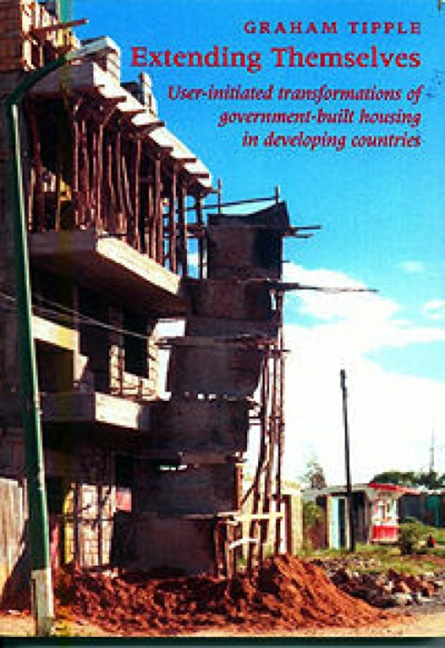 Extending Themselves
Extending Themselves Book contents
- Frontmatter
- Contents
- Acknowledgements
- 1 Introduction
- 2 The housing squeeze
- 3 More than just a dwelling
- 4 The financial element: transformation as an investment
- 5 Sustainability issues
- 6 The transformation process
- 7 The case for transformations
- 8 Policies for enabling transformations
- Appendix 1 Transformations in Bangladesh
- Appendix 2 Transformations in Egypt
- Appendix 3 Transformations in Ghana
- Appendix 4 Transformations in Zimbabwe
- Appendix 5 An assessment of the decision to transform
- References
- Index
Appendix 4 - Transformations in Zimbabwe
- Frontmatter
- Contents
- Acknowledgements
- 1 Introduction
- 2 The housing squeeze
- 3 More than just a dwelling
- 4 The financial element: transformation as an investment
- 5 Sustainability issues
- 6 The transformation process
- 7 The case for transformations
- 8 Policies for enabling transformations
- Appendix 1 Transformations in Bangladesh
- Appendix 2 Transformations in Egypt
- Appendix 3 Transformations in Ghana
- Appendix 4 Transformations in Zimbabwe
- Appendix 5 An assessment of the decision to transform
- References
- Index
Summary
Introduction to Mbare and Highfield, Harare
Harare, formerly called Salisbury, is the capital of the Republic of Zimbabwe (formerly Rhodesia) in Southern Africa and has a population of just over one million. Situated about 1400 metres above sea level, the city was founded as Fort Salisbury on 13 September 1890, and developed by the British South Africa Company, as the culmination of a military expedition to occupy the area between the Zambezi and Limpopo rivers on behalf of Britain.
All urban settlements in Zimbabwe have an early and long history of racial segregation. In Harare racial segregation in terms of housing for the African population began as a early as March 1892 when the Sanitary Board promulgated regulations to establish a ‘Native Location’ at a site about 1 km south of the main town centre (and farthest away from the White suburbs north of the town centre). The location was under the supervision of a European superintendent who supervised construction of buildings and administered a curfew that ensured that ‘African workers were not outside the location or their masters’ premises after 9 pm’ (Jackson, 1986: 8–9). By the turn of the century 26 huts had been built and the municipality gradually replaced African-owned huts with its own housing. In 1907 a new location (the basis of the present day Mbare) of some 25 ha was established about 4 km from the town centre and further south. It provided accommodation mainly for male workers whose families were expected to remain in the rural native reserves.
The policy of racial segregation gained momentum in 1923 when Southern Rhodesia was given responsible self-government by Britain. New housing estates or ‘townships’ were developed where houses were leased and tied to employment. However, by the 1950s it became evident that some African workers could not return to the rural areas and were destined to remain even after retirement in urban areas. To allow for this, home-ownership schemes (based on long leases rather than on freehold title) were developed. Under the Land Apportionment Act of 1963 Africans were allowed freehold to land but only in designated rural and urban areas.
Following the Unilateral Declaration of Independence in 1965 and the strengthening of ties (as well as policy objectives) with apartheid South Africa, moves were initiated to remove Africans from urban areas altogether.
- Type
- Chapter
- Information
- Extending ThemselvesUser Initiated Transformations of Government-built Housing in Developing Countries, pp. 288 - 329Publisher: Liverpool University PressPrint publication year: 2000


